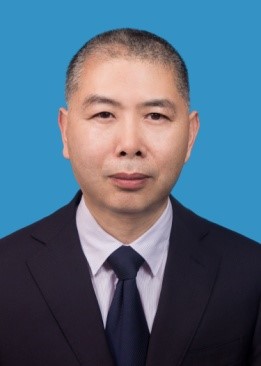Chief Scientist
Zhejiang Mariculture Research Institute
6-1 Hetongqiao, Wenzhou, Zhejiang 325005
China

Short Bio
Shaobo Chen has been devoted to the research of mariculture and coastal ecology for more than 30 years, and has presided over or participated in a total of 53 relevant scientific research projects including 22 national and provincial projects in China and 10 international projects aided by UNDP, APEC, Asian Development Bank and Italian government, etc. Concurrently he is holding positions as a board member of China Ocean Engineering Consulting Association as well as the East China Sea Environmental Branch of China Pacific Society. He also serves as a member of Aquaculture Sub-group of Advisory Group for formulation of the 13th Five-Year Plan in Zhejiang Province. He is now the PI of “R&D and demonstration of key technologies for conservation of important biological resources in the East China Sea” which is a unit of China’s key R&D project related to marine conservation under the Ministry of Science and Technology.
Abstract-Status and Future-oriented Practices of Mariculture in China
China's coast stretches across three climate zones from temperate and subtropical into tropical zones with 140,000 km coastline and 3,000,000 km2 of marine area and 6,500 islands under its jurisdiction, which hosts an exceptional marine biodiversity comprising about 20,300 recorded species. The rich coastal and marine resources in turn support the flourish development of mariculture industry. Mariculture in China could trace back to before Han Dynasty which started from 202 BC, when the oyster culture was practiced. In Son Dynasty (960-1279), the method of culturing pearls was invented. Since the establishing of People’s Republic of China in 1949, six development booms of mariculture could be identified: the 1st boom - marine algal culture in 1960s, the 2nd boom- marine shrimp culture in 1980s, the 3rd boom - shellfish culture in 1990s, the 4th boom - marine fish culture in the end of 20th century, the 5th boom - culture of precious marine products (e.g., sea cucumber and abalone) in the beginning of the 21th century, and the 6th boom – large marine ranching in the new era of 21st century. The mariculure industry in China has been developing very fast, and both the area and total output of the sector has ranked the top of the world, with 20.84 km2 and 20,007,000 tonnes respectively in 2017. The cultured species include fish, shrimp and crab, shellfish, algae and precious species, and the culture forms include pond culture, normal cage culture, deep water cage culture, raft culture, suspending cage culture, bottom sowing culture and industrialized culture, etc.. Main achievements of mariculture technologies are industrialized breeding, production of multiploid species, development and production of healthy pellet feed, new species culture, development of modern culture facilities and R&D of new culture technologies, etc..With the vast development, China’s mariculture is also facing big problems including self-pollution and exogenous pollution, lacking of excellent germplasm and seedlings, diseases and decreasing of space for culture, etc.. To deal with the challenges, China has devoted to the development to future-oriented mariculture modes, e.g. the ecological mariculture with IMTA (Integrated Multi-trophic Aquaculture) as main part and the modernized marine ranching are in practicing.



